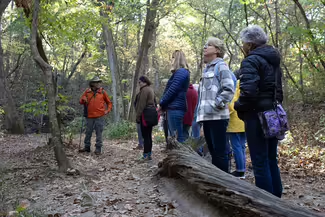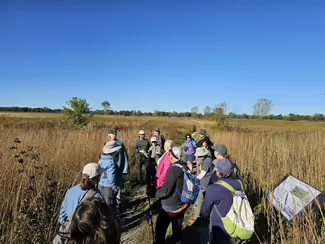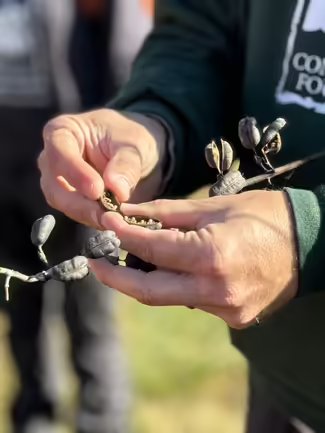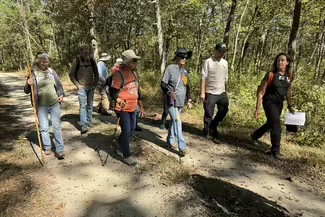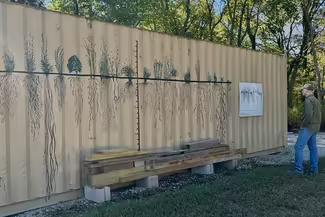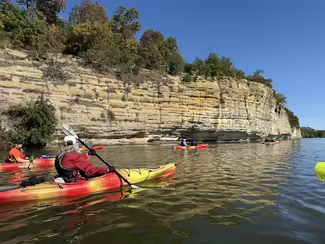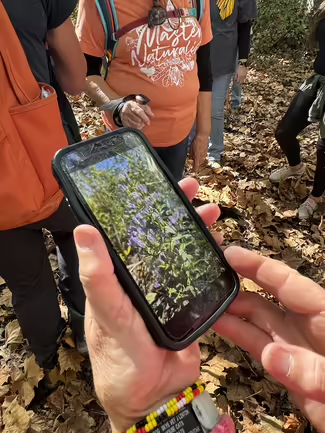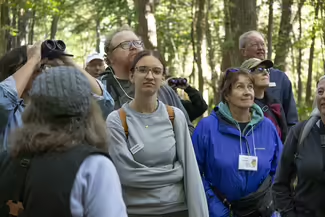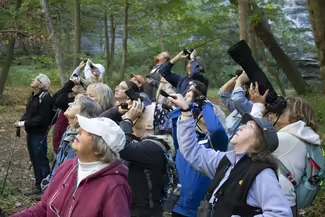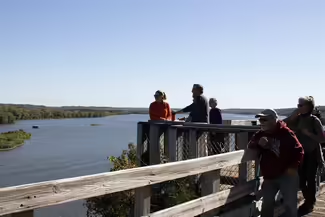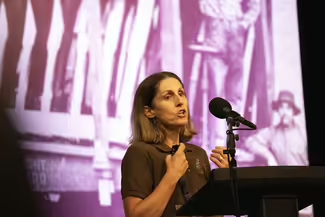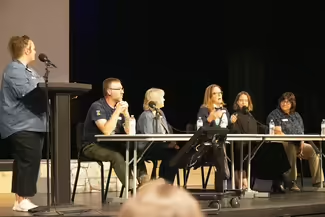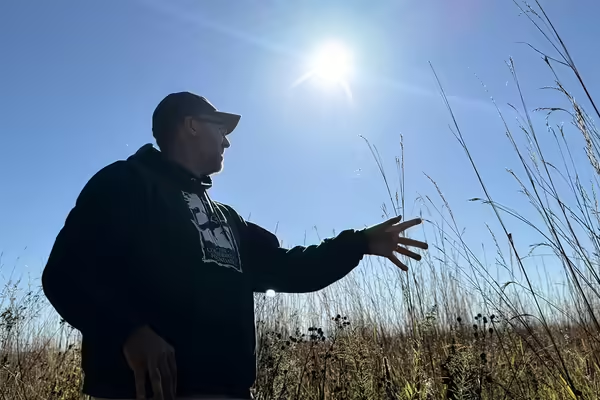
OGLESBY, Ill. — Of all the state parks in Illinois, Starved Rock has the most visitors, and this October, it also welcomed University of Illinois Extension’s Master Naturalists to explore and learn together. Against a backdrop of migrating pelicans floating in the Illinois River at the base of Starved Rock’s namesake sandstone bluffs and bald eagles soaring overhead, 180 Extension volunteers and staff came together on Oct. 9 and 10 for Extension’s Master Naturalist state conference.
The annual gathering is an opportunity for Master Naturalists from across Illinois to connect, share innovative ideas, and gain new skills to put into practice in their local communities. Known as the Prairie State, Illinois actually has 14 distinct natural divisions, but they all face similar challenges – habitat loss, invasive species, pollution, and climate change. While these issues can feel overwhelming, speakers at the 2025 conference emphasized that the combined ongoing efforts of environmental stewards make a difference. Big and small, each act of collecting data, educating youth, and contributing to the conservation of natural areas builds momentum.
“You all are the inspiration for the hope that I have in a better future and a better world, and I want to say thank you,” said Master Naturalist Program Specialist Abigail Garofalo in her welcome address.
Master Naturalists believe in hands-on learning, so true to form, the conference began with a day of tours and presentations led by regional guides in and around Starved Rock State Park and Lock and Dam, the Dixon Waterfowl Refuge, Dayton Bluffs Preserve, and the Illinois River. Hikers scanned the tree canopy for birds and discussed the formation of the area’s unique sandstone canyons, while kayakers explored the waters, wetlands, and wildlife of the Illinois River.
The learning continued the next day, with presentations on topics including wildlife rehabilitation, tick safety, emerging water contaminants, wetland ecology, and native plants. A panel discussion explored community science opportunities in which the general population can contribute. The keynote speaker, Illinois Natural History Survey avian ecologist Tara Beveroth, expanded on that opportunity, noting how bird surveys that relied on residents’ participation have provided decades of data about trends in changing bird populations, which helps scientists prioritize conservation efforts.
The conference was hosted by staff from the local Extension offices in Bureau, LaSalle, Marshall, and Putnam counties. “It was a pleasure to support the dedicated volunteers who make such a meaningful impact in our communities and to introduce them to the fantastic natural areas in LaSalle County,” said Commercial Agriculture Educator Emily Hansen, who coordinated the conference.
Illinois has 900 Master Naturalist volunteers throughout the state, who learn about botany, environmental ethics, archaeology, climate, forestry, geology, prairies, mammals, birds, insects, urban and agricultural systems, and more from University of Illinois experts. These environmental stewards then share their time and expertise through local environmental stewardship projects such as invasive species removal, restoration projects, wildlife monitoring, and more.
The Master Naturalist program is offered through local Illinois Extension offices around the state. Learn more about how to become an Illinois Master Naturalist and bring positive change to your community’s natural areas at extension.illinois.edu/MN.
Extension’s natural resources, environment, and energy program provides research-based education for awareness and action to sustain healthy environments and ecosystems that support quality living and resilient communities. Extension staff empower people across Illinois to make a difference through the community volunteer programs Master Naturalists, Climate Stewards, and Master Watershed Stewards.
Photo: Rosie Ralston, University of Illinois Extension.
University of Illinois Extension develops educational programs, extends knowledge, and builds partnerships to support people, communities, and their environments as part of the state's land-grant institution. Extension serves as the leading public outreach effort for University of Illinois Urbana-Champaign and the College of Agricultural, Consumer and Environmental Sciences in all 102 Illinois counties through a network of 27 multi-county units and over 700 staff statewide. Extension’s mission is responsive to eight strategic priorities — community, economy, environment, food and agriculture, health, partnerships, technology and discovery, and workforce excellence — that are served through six program areas — 4-H youth development, agriculture and agribusiness, community and economic development, family and consumer science, integrated health disparities, and natural resources, environment, and energy.
